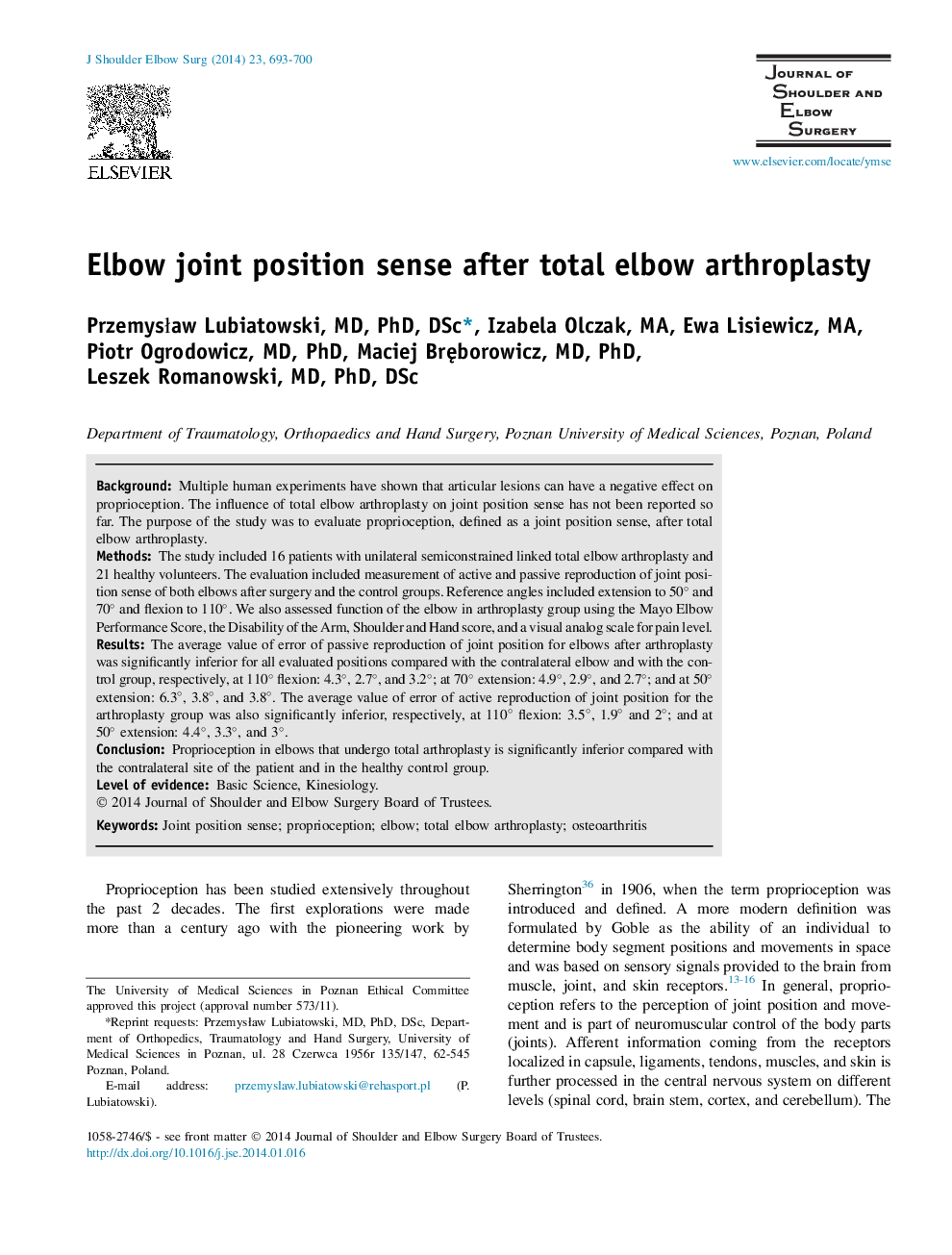| Article ID | Journal | Published Year | Pages | File Type |
|---|---|---|---|---|
| 4074431 | Journal of Shoulder and Elbow Surgery | 2014 | 8 Pages |
BackgroundMultiple human experiments have shown that articular lesions can have a negative effect on proprioception. The influence of total elbow arthroplasty on joint position sense has not been reported so far. The purpose of the study was to evaluate proprioception, defined as a joint position sense, after total elbow arthroplasty.MethodsThe study included 16 patients with unilateral semiconstrained linked total elbow arthroplasty and 21 healthy volunteers. The evaluation included measurement of active and passive reproduction of joint position sense of both elbows after surgery and the control groups. Reference angles included extension to 50° and 70° and flexion to 110°. We also assessed function of the elbow in arthroplasty group using the Mayo Elbow Performance Score, the Disability of the Arm, Shoulder and Hand score, and a visual analog scale for pain level.ResultsThe average value of error of passive reproduction of joint position for elbows after arthroplasty was significantly inferior for all evaluated positions compared with the contralateral elbow and with the control group, respectively, at 110° flexion: 4.3°, 2.7°, and 3.2°; at 70° extension: 4.9°, 2.9°, and 2.7°; and at 50° extension: 6.3°, 3.8°, and 3.8°. The average value of error of active reproduction of joint position for the arthroplasty group was also significantly inferior, respectively, at 110° flexion: 3.5°, 1.9° and 2°; and at 50° extension: 4.4°, 3.3°, and 3°.ConclusionProprioception in elbows that undergo total arthroplasty is significantly inferior compared with the contralateral site of the patient and in the healthy control group.
